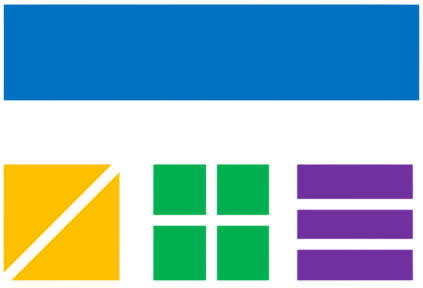Personal Loan Calculator Information
What is a Personal Loan Calculator?
Personal Loan Calculator is a free, easy-to-use tool that helps you estimate your monthly payments, total interest costs, and analyze the affordability of a personal loan. Simply enter your loan amount, interest rate, term, and income information to see a detailed breakdown of your payments and debt-to-income ratio.
This calculator is ideal for anyone considering a personal loan for debt consolidation, home improvements, medical expenses, or other major purchases. By understanding the true cost of borrowing and your debt-to-income ratio, you can make informed decisions about whether a personal loan fits your financial situation.
How Personal Loans Work
A personal loan is an unsecured loan that you can use for almost any purpose. Unlike secured loans (like mortgages or auto loans), personal loans don't require collateral. The lender provides funds based on your creditworthiness, and you repay the loan (principal) plus interest over a set term, usually 12–84 months.
- Principal: The amount borrowed
- APR (Annual Percentage Rate): The yearly interest rate, including fees
- Term: The length of the loan, typically in months
- Unsecured: No collateral required, based on creditworthiness
- Fixed Rate: Interest rate remains the same throughout the loan term
How Monthly Payments Are Calculated
Monthly payments are based on the loan amount, interest rate, and term. The standard formula for a fixed-rate personal loan is:
- P = Monthly payment
- L = Loan amount (principal)
- r = Monthly interest rate (APR / 12 / 100)
- n = Number of monthly payments (term)
Example: $10,000 loan, 8% APR, 36 months
Monthly Payment ≈ $313.36
Debt-to-Income Ratio (DTI)
Your debt-to-income ratio is a key factor lenders use to evaluate your loan application. It measures how much of your monthly income goes toward debt payments:
- Total Monthly Debt Payments = Sum of all monthly debt obligations
- Gross Monthly Income = Your monthly income before taxes
- DTI = Debt-to-income ratio as a percentage
Most lenders prefer a DTI ratio below 43%, though some may accept up to 50% for borrowers with excellent credit. A lower DTI ratio generally means better loan terms and approval chances.
Credit Score Impact
Your credit score significantly affects your loan approval and interest rate. Higher scores (700+) typically get the best rates.
- Pay bills on time
- Reduce credit card balances
- Avoid new hard inquiries before applying
- Check your credit report for errors
- Maintain a mix of credit types
Common Uses for Personal Loans
- Debt Consolidation: Combine multiple high-interest debts into one lower-rate loan
- Home Improvements: Finance renovations, repairs, or upgrades
- Medical Expenses: Cover unexpected healthcare costs
- Major Purchases: Buy appliances, furniture, or electronics
- Education: Pay for courses, certifications, or training
- Weddings: Finance wedding expenses
- Vacations: Fund travel expenses
Loan Terms and Interest Rates
Personal loan terms and rates vary based on your credit score, income, and the lender:
Credit Score Ranges
Excellent Credit (720+)
- 6-12% APR
- Longer terms available
- Best approval rates
- Lowest fees
Good Credit (690-719)
- 8-15% APR
- Standard terms
- Good approval rates
- Moderate fees
Fair Credit (630-689)
- 12-25% APR
- Shorter terms
- Limited approval
- Higher fees
Poor Credit (300-629)
- 18-36% APR
- Limited terms
- Difficult approval
- Highest fees
Loan terms typically range from 12 to 84 months, with longer terms resulting in lower monthly payments but higher total interest costs.
Fees and Charges
Personal loans may include various fees that affect the total cost:
- Origination Fee: 1-8% of loan amount, charged upfront
- Prepayment Penalty: Fee for paying off loan early (less common)
- Late Payment Fee: Charged for missed payments
- Returned Payment Fee: Fee for insufficient funds
Always read the loan agreement carefully to understand all fees and charges.
Comparing Loan Options
- Shop Around: Compare offers from multiple lenders
- Check the APR: Includes both interest and fees
- Consider the Term: Longer terms mean lower payments but more interest
- Read Reviews: Research lender reputation and customer service
- Check Prepayment Terms: Ensure you can pay off early without penalties
Alternatives to Personal Loans
Consider these alternatives before taking out a personal loan:
- Credit Cards: For smaller amounts, especially with 0% intro offers
- Home Equity Loans: Lower rates but require home equity
- 401(k) Loans: Borrow from retirement savings (risky)
- Savings: Use emergency fund or other savings
- Side Income: Generate additional income to cover expenses
Frequently Asked Questions (FAQ)
Q: Can I get a personal loan with bad credit?
A: Yes, but expect higher interest rates and fees. Some lenders specialize in bad credit loans.
Q: How long does it take to get approved for a personal loan?
A: Online lenders often provide instant decisions and funding within 1-3 business days.
Q: Can I use a personal loan for anything?
A: Generally yes, but some lenders have restrictions on certain uses like gambling or illegal activities.
Q: What's the difference between a personal loan and a credit card?
A: Personal loans have fixed terms and payments, while credit cards have revolving credit with variable payments.
Q: Can I pay off a personal loan early?
A: Usually yes, but check for prepayment penalties in your loan agreement.
Important Disclaimers
Disclaimer: This calculator provides estimates for educational purposes only. Actual loan terms, rates, and payments may vary significantly based on your credit score, income, and lender requirements.
Always consult with a qualified financial advisor or lender before making decisions about personal loans. This calculator does not account for all possible fees, charges, or special circumstances that may apply to your specific situation.
Interest rates and terms are subject to change. Actual loan approval and terms are subject to lender underwriting and may differ from calculator estimates.
